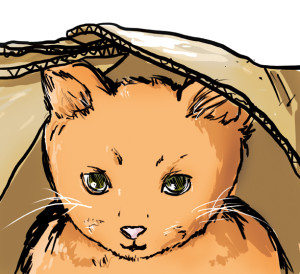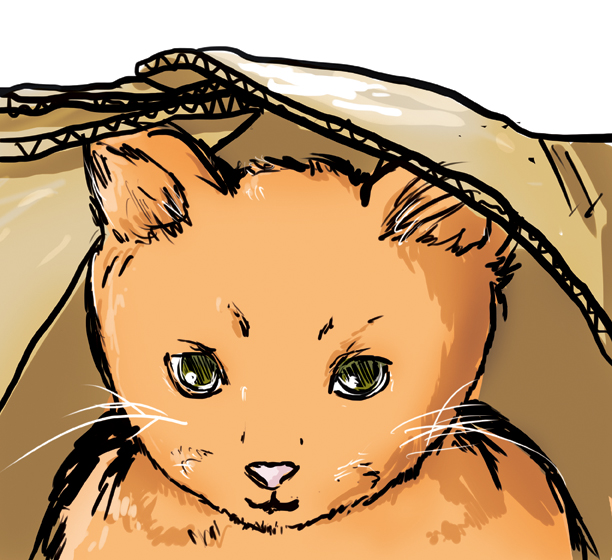Invisible to the casual onlooker and shrouded by the overhanging branches of a coast live oak or a bay tree, 15 cat feeding stations are sprinkled throughout the Stanford campus, unbeknownst to most of its inhabitants. Ranging from the Plant Growth Facility on Stockfarm Road to the bushes outside Lagunita residences and all the way to East Campus, each station consists of an unobtrusive black plastic bin to protect the food and feeding cats from the sun and rainstorms. This station system is an integral component of the Stanford Cat Network.
“One thing people comment on when they look at the Stanford Cat Network webpage is that all the cats look really healthy,” said Kirk Gilmore, an engineering physicist at the Stanford Linear Accelerator Center (SLAC) who volunteers as a “feeder” for the Stanford Cat Network. “People expect feral cats to be all skinny, scrawny and unhealthy-looking but that’s exactly what we try to avoid.”
The Stanford Cat Network was founded in 1989, when maintenance employees on campus began finding litters of sick kittens around Stanford. The news traveled to administrative officials and someone decided that the issue needed to be addressed.
“There was a decision that came down that the humane thing to do was to go trap all these animals and take them to the local shelter where they would all be killed because they weren’t adoptable [and] there were too many of them,” said Carole Miller, co-founder of the Stanford Cat Network.
Community members who had already been feeding the animals independently banded together in support of the cats. The Stanford Cat Network, as they called themselves, negotiated an agreement with the administrators, who allowed them to provide “population management” of the homeless cats on campus. Population management entails spaying, neutering and caring for the creatures, in a process often called “Trap, Neuter, Return.” This program had a dramatic effect on the campus feline population.
“We had at least 500 cats on campus in ’89,” Miller said. “We have two dozen known cats today.”
Many “newcomer” cats appear each year, left by students who suddenly find they cannot care for their pets over a school holiday or find the responsibility of owning an animal tiresome. When found, domesticated or “tameable” cats will be placed in foster homes and later be put up for adoption. Miller takes in any cats that are not adopted to live at her sanctuary as the network is strictly no-kill.

The remaining two dozen cats are feral, or un-socialized. They cannot be adopted or live as pets, but still cannot completely fend for themselves. Thus, they rely on the Stanford Cat Network feeders for sustenance.
“The most feral cat is still a domestic animal,” Miller said.
Feeders on campus include staff, faculty members and students.
“I do basically what needs to be done,” Gilmore said. “I feed and I trap. We put a lot of energy into making the traps comfortable for the feral cats so we can trap them. We usually monitor them for a while to make sure they haven’t been trapped before.”
After trapping the cats, volunteers like Gilmore bring them to a veterinarian for a check-up and spaying or neutering.
Driving around in a white minivan with a license plate that reads “CATNET” and a trunk filled with cat food and water jugs, Miller will often take on feeding responsibilities in addition to her position as co-founder of the organization.
Approaching a station, she fills a food bowl with both dry pellets and wet paste so that cats with dental problems do not go hungry. Two options ensure that every cat will at least be able to eat some portion of the food provided. After washing and replacing the used bowl, Miller hops back into her vehicle and headed to the next location.
“Once I get going, it’s rather therapeutic,” Miller said.
At the Plant Growth Facility on West Campus, the Stanford Cat Network has built a much larger enclosure, complete with cat climbing equipment. Curled up inside the enclosure is a glossy black and brown cat suffering from feline leukemia. Because Milton is feral, he cannot be adopted. He also cannot return into the company of the other feral or homeless cats roaming the Stanford campus for fear of passing on the contagious disease. The Stanford Cat Network has been able to provide Milton with a haven he would not otherwise have.
Although not affiliated with the Stanford Cat Network, East Florence Moore Resident Fellow (RF) Susan Watkins is also an on-campus cat caretaker. Working through an organization called Humanimal, Watkins and her family have fostered five or six litters over the course of the nine years they have served as RFs, each litter containing between four to six feral kittens. Their position as RFs has been ideal for socializing these kittens.
“It’s a great way to get residents down here; they’re kittens, they’re adorable!” Watkins said. “People will just come and sit in here and there will be a kitten asleep on their lap.”
Once the kittens weigh two pounds, they can be returned to Humanimal to be spayed or neutered and later adopted out.
Not everyone on campus however is enamored with cats, or with the Stanford Cat Network. At one of the stations, a 70-pound feeding structure disappeared and Miller suspected sabotage.
“There are those of us who love these animals, but there are an awful lot of people out there who hate cats, to the point of being willing to go too far and do something,” Miller said.
Despite these incidents, the roaming cats on campus return to the feeding stations year after year. Some of the cats present in 1989 when the Network was founded just recently died. The organization’s success in decreasing the number of cats on campus is apparent, and perhaps disappointing to some.
“We used to get a lot of student feeders [who came] because they saw cats,” Miller said. “And now they just go on faith.”
